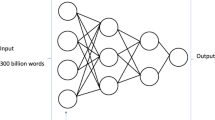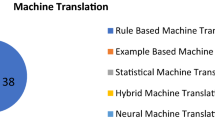Abstract
Because a large number of Chinese characters are commonly used in both Japanese and Chinese, Chinese-speaking learners of Japanese as a second language (JSL) find it more challenging to learn Japanese functional expressions than to learn other Japanese vocabulary. To address this challenge, we have developed Jastudy, a computer-assisted language learning (CALL) system designed specifically for Chinese-speaking learners studying Japanese functional expressions. Given a Japanese sentence as an input, the system automatically detects Japanese functional expressions using a character-based bidirectional long short-term memory with a conditional random field (BiLSTM-CRF) model. The sentence is then segmented and the parts of speech (POS) are tagged (word segmentation and POS tagging) by a Japanese morphological analyzer, MeCab (http://taku910.github.io/mecab/), trained using a CRF model. In addition, the system provides JSL learners with appropriate example sentences that illustrate Japanese functional expressions. The system uses a ranking system, which gives easier sentences a higher rank, when selecting example sentences. A support vector machine for ranking (SVMRank) algorithm estimates the readability of example sentences, using Japanese-Chinese common words as an important feature. A k-means clustering algorithm is used to cluster example sentences that contain functional expressions with the same meanings, based on part-of-speech, conjugation form, and semantic attributes. Finally, to evaluate the usefulness of the system, we have conducted experiments and reported on a preliminary user study involving Chinese-speaking JSL learners.









Similar content being viewed by others
Notes
https://ja.wiktionary.org/wiki/メインページ.
Here, N0 implies unknown words in the JLPT vocabulary list.
References
Chall, J. S., & Dale, E. (1995). Readability revisited: The new Dale-Chall readability formula. Brookline, MA: Brookline Books.
Flesch, F. (1948). A new readability yardstick. Journal of Applied Psychology, 32(3), 221–233.
Group Jamashi, & Xu, Y. (2001). Chubunban Nihongo Kukei Jiten-Nihongo Bunkei Jiten (in Chinese and Japanese). Tokyo: Kuroshio Publishers.
Han, D., & Song, X. (2011). Japanese sentence pattern learning with the use of illustrative examples extracted from the web. IEEJ Transactions on Electrical and Electronic Engineering, 6(5), 490–496.
Hasebe, Y. & Lee, J. (2015). Introducing a Readability Evaluation System for Japanese Language Education. In Proceedings of the 6th international conference on computer assisted systems for teaching & learning Japanese, pp. 19–22.
Hazelbeck, G., & Saito, H. (2009). A corpus-based E-learning System for Japanese vocabulary. Journal of Natural Language Processing, 16(4), 3–27.
Hyodo, Y., Murakami, Y. & Ikeda, T. (2000). A dictionary of long-unit functional words for analyzing bunsetsu. In Proceedings of the 6th annual meeting of the association for natural language processing, pp. 407–410.
Joachims, T. (2006). Training Linear SVMs in Linear Time. In Proceedings of the ACM conference on knowledge discovery and data mining (KDD), pp. 217–226.
Kincaid, JP., Fishburne, RP., Rogers, RL. & Chissom, BS. (1975). Derivation of new readability formulas (Automated Readability Index, Fog Count and Flesch Reading Ease Formula) for Navy-enlisted personnel. Research Branch Report 8–75. Millington, TN: Naval Technical Training, U.S. Naval Air Station, Memphis, TN.
Kudo, T., Yamamoto, K. & Matsumoto, Y. (2004). Applying Conditional Random Fields to Japanese Morphological Analysis. In Proceedings of the 2004 conference on empirical methods in natural language processing, pp. 230–237.
Liu, J. & Matsumoto, Y. (2016). Simplification of Example Sentences for Learners of Japanese Functional Expressions. In Proceedings of the 3rd workshop on natural language processing techniques for educational applications, pp. 1–5.
Matsuyoshi, S., Sato, S. & Utsuro, T. (2006). Compilation of a dictionary of Japanese functional expressions with hierarchical organization. In Proceedings of international conference on computer processing of oriental languages (ICCPOL), LNAI: vol. 4285, pp. 395–402.
National Institute for Japanese Language and Linguistics. (2004). Bunrui goihyo zouhokaiteiban (in Japanese). Tokyo: Dainihontosho Press.
Ohno, T., Edani, Z., Inoue, A. & Han, D. (2013). A Japanese Learning Support System Matching Individual Abilities. In Proceedings of the PACLIC 27 workshop on computer-assisted language learning, pp. 556–562.
Omura, M. & Matsumoto, Y. (2014). Second Language Learner Composition Error Correction. In Proceedings of the 20th annual conference of the society of language processing, pp. 242–245.
Pereira, L., Manguilimotan, E., & Matsumoto, Y. (2016). Leveraging a large learner corpus for automatic suggestion of collocations for learners of Japanese as a second language. CALICO Journal, 33(3), 311–333.
Sato, S., Matsuyoshi, S., & Kondoh, Y. (2008). Automatic Assessment of Japanese Text Readability Based on a Textbook Corpus. In Proceedings of the sixth international language resources and evaluation, pp. 654–660.
Shibasaki, H. & Sawai, Y. (2007). Study for constructing a readability formula of Japanese texts using a corpus of language school textbooks. IEICE Technical Report NCL2007-vol. 32, pp. 19–24.
Shibasaki, H., & Tamaoka, K. (2010). Constructing a formula to predict school grades 1–9 based on Japanese language school textbooks. Japan Journal of Educational Technology, 33(4), 449–458.
Shime, T., Tsuchiya, M., Matsuyoshi, S., Utsuro, T., & Sato, S. (2007). Automatic detection of Japanese compound functional expressions and its application to statistical dependency analysis. Journal of Natural Language Processing, 14(5), 167–196.
Shinmura, I. (Ed.). (1998). Kojien fifth Edition (in Japanese). Tokyo: Iwanani Press.
Shudo, K., Tanabe, T., Takahashi, M. & Yoshimura, K. (2004). MWEs as non-propositional content indicators. In Proceedings of the 2nd ACL workshop on multiword expressions: Integrating processing (MWE-2004), pp. 32–39.
Suzuki, T., Abe, Y, Toyota, Y, Utsuro, T., Matsuyoshi, S. & Tsuchiya, M. (2012). Detecting Japanese Compound Functional Expressions using Canonical/Derivational Relation. In Proceedings of the eighth international conference on language resources and evaluation (LREC-2012).
Tateishi, Y., Ono, Y. & Yamada, H. (1988a). A computer readability formula of Japanese texts for machine scoring. In Proceedings of the 12th conference on computational linguistics, vol. 2, pp. 649–654.
Tateishi, Y., Ono, Y. & Yamada, H. (1988b). Derivation of readability formula of Japanese texts. IPSJSIG Note 88-DPHI-18-4, Information Processing Society of Japan.
Tolmachev, A. & Kurohashi, S. (2017). Automatic Extraction of High-Quality Example Sentences for Word Learning Using a Determinantal Point Process. In Proceedings of the 12th workshop on innovative use of NLP for building educational applications, pp. 133–142.
Tomomastu, E., Miyamoto, J., & Wakuki, M. (2016). Japanese expressions dictionary. Tokyo: ALC Press Inc.
Toyoda, E. (2016). Evaluation of computerized reading-assistance systems for reading Japanese texts—from a linguistic point of view. Australasian Journal of Educational Technology, 32(5), 94–97.
Tsuchiya, M., Shime, T., Takagi, T., Utsuro, T., Uchimoto, K., Matsuyoshi, S, Sato, S. & Nakagawa, S. (2006). Chunking Japanese compound functional expressions by machine learning. In Proceedings of the workshop on multi-word-expressions in a multilingual context, pp. 25–32.
Wang, S. (2001). A comparative study of vocabulary in Chinese and Japanese. Chengdu: Sichuan Literature and Art Publishing House.
Wang, S. & Andersen, E. (2016). Grammatical Templates: Improving Text Difficulty Evaluation for Language Learners. In Proceedings of the 26th international conference on computational linguistics: technical papers (COLING 2016), pp. 1692–1702.
Wang, L., & Peng, X. (2010a). A “Must have” reference for the New JLPT N2 vocabulary. Shanghai: East China University of Science and Technology Press.
Wang, L., & Peng, X. (2010b). A “Must have” reference for the New JLPT N1 vocabulary. Shanghai: East China University of Science and Technology Press.
Wang, L., & Peng, X. (2011a). A “Must have” reference for the New JLPT N4-N5 vocabulary. Shanghai: East China University of Science and Technology Press.
Wang, L., & Peng, X. (2011b). A “Must have” reference for the New JLPT N3 vocabulary. Shanghai: East China University of Science and Technology Press.
Xu, X., & Reika, (2013a). Detailed introduction to the New JLPT N1–N5 grammar. Shanghai: East China University of Science and Technology Press.
Xu, X., & Reika, (2013b). Detailed introduction to the New JLPT N1–N5 vocabulary. Shanghai: East China University of Science and Technology Press.
Acknowledgements
This study was supported by the China Scholarship Council (CSC) and the Japan Ministry of Education, Culture, Sports, Science and Technology (MEXT). The authors would like to thank the editor and the reviewers for their valuable comments and suggestions.
Funding
This study has not received funding.
Author information
Authors and Affiliations
Corresponding author
Ethics declarations
Conflict of interest
The authors declare that they have no conflict of interest.
Additional information
Publisher's Note
Springer Nature remains neutral with regard to jurisdictional claims in published maps and institutional affiliations.
Rights and permissions
About this article
Cite this article
Liu, J., Shindo, H. & Matsumoto, Y. Development of a computer-assisted Japanese functional expression learning system for Chinese-speaking learners. Education Tech Research Dev 67, 1307–1331 (2019). https://doi.org/10.1007/s11423-019-09669-0
Published:
Issue Date:
DOI: https://doi.org/10.1007/s11423-019-09669-0




